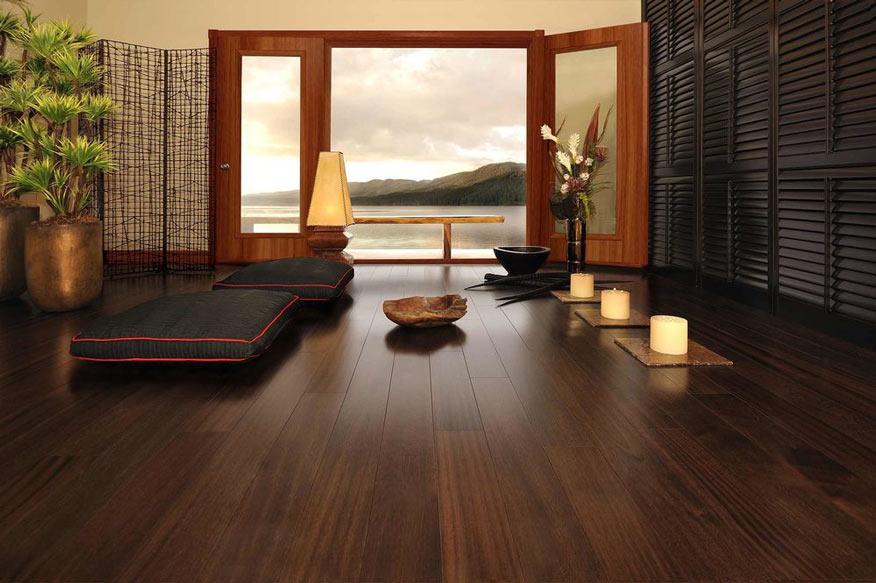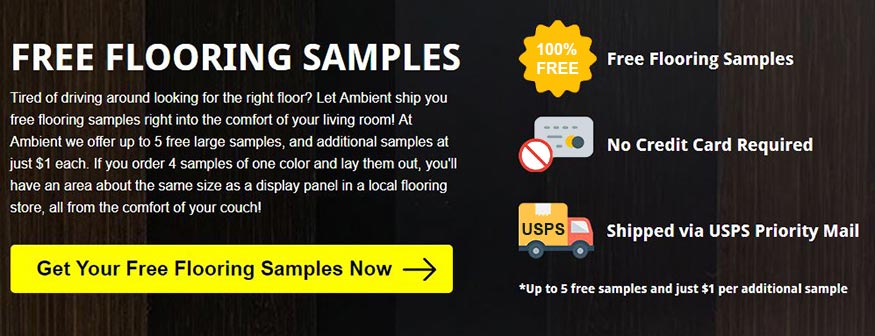The history of the usage of bamboo by humans dates back to more than 5000 years ago. Its longevity speaks for its functionality and efficiency.
Ever since the Song Dynasty in ancient China, bamboo has man uses. From basic construction materials and clothing to food and medicine, this plant is extremely versatile.
What is Bamboo, and Where Does it Come From?
Most people think Bamboo is a type of tree, but it is actually the largest type of grass there is. It belongs to the grass family, Poaceae.
- Bamboo is the most resilient type of grass under almost any condition and can withstand temperatures as low as minus 20 degrees Fahrenheit.
- Bamboo grows on all continents except for Antarctica and Europe, and it can grow 100 feet high and 8 inches in diameter.
- Although there are more than 1000 identified Bamboo species globally, only 100 are used for commercial purposes.
The extraordinary resilience of Bamboo was proven during the atomic bombing in Hiroshima, Japan, in 1945. The flames and heat destroyed most of the trees and plants in the explosion area except for a bamboo grove, which managed to survive. 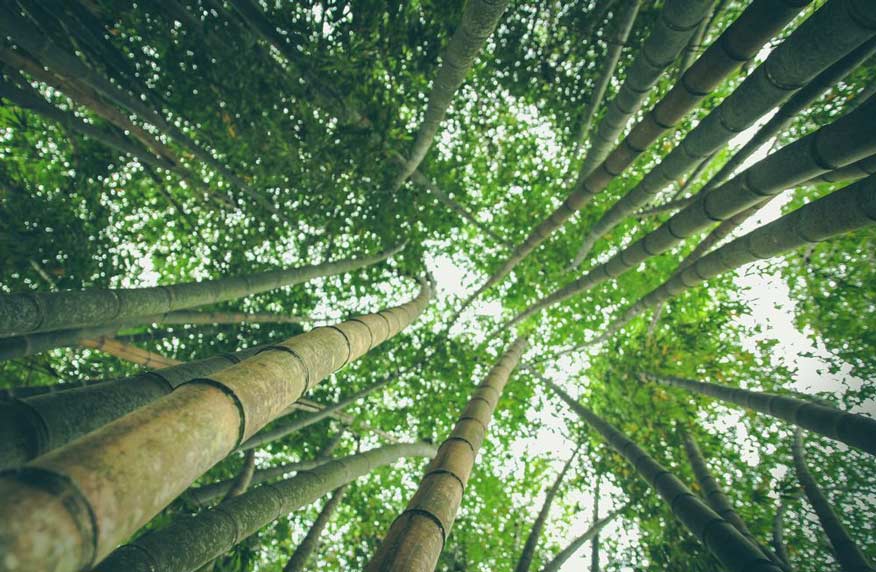
What are Some Interesting Uses of Bamboo?
Bamboo is still used today for several purposes, including:
- medical aid
- construction materials (check out our interesting page, Bamboo 101: Beginner’s Guide to Bamboo Flooring)
- decorations
- exquisite dishes of Asian cuisine (bamboo sprouts)
Other fascinating and creative uses for bamboo illustrate how multifunctional bamboo can be. Asians managed to exploit bamboo to its fullest capacity in these various fields:
- Contractors in India and China use bamboo for road reinforcements and even bridges that support up to 16 tons.
- Asian locals continue to find that the bamboo plant is a basic medical aid for multiple health issues.
- In certain parts of Asia, bamboo is used to promote fertility in cows.
- UNESCO studies show that 17 acres of bamboo can produce enough material to build nearly 1000 bamboo houses, which is very common in China.
- Bamboo furniture is another amazing invention, especially because of its aesthetics and durability.
- One very unusual use for bamboo is the production of diapers. Baby diapers are now commonly used in Japan since it was discovered that bamboo cloth is antibacterial and eco-friendly, unlike conventional baby products on the market.
- Beer lovers will definitely be excited to learn that bamboo beer tastes fantastic! It was invented in 2012 by a young entrepreneur in Mexico who also founded the Bambusa company that specializes in bamboo beer and other liquors.
Known as the ancient solution to modern problems, more and more uses for bamboo are arising. With the increasing demand for wood materials, bamboo is a valuable substitute. This is good because it lowers the necessity for Earth-damaging deforestation, thus preventing the ozone layer’s depletion.
Thing to Consider
There are endless eco-friendly characteristics of the bamboo plant and bamboo products, and bamboo is a perfectly suitable substitute for several materials in a variety of industries:
- Because damage to millions of acres of forest occurs weekly to produce paper, the bamboo paper is an excellent substitute. It is a sustainable and eco-friendly alternative to wood pulp.
- For housing construction, bamboo is a far more superior material than traditional wood. Its tensile strength is comparable to steel. Strength and versatility make using bamboo as the main building material definitely worth considering.
- In many parts of the world, deforestation has left behind devastating negative side effects, including landslides. Planting bamboo in areas that have these issues is becoming one of the best defenses against corrosion.
It is amazing how quickly bamboo has risen in popularity as a flooring material. Once again, Asian history shows us how incredibly aesthetic, durable, and affordable bamboo flooring has always been. The fast growth rate and strength of the bamboo plant make it an attractive alternative to hardwood flooring.
Certain species of bamboo can grow more than three feet per day. You can imagine why bamboo is viewed as a viable and ecological alternative to any other type of flooring material. 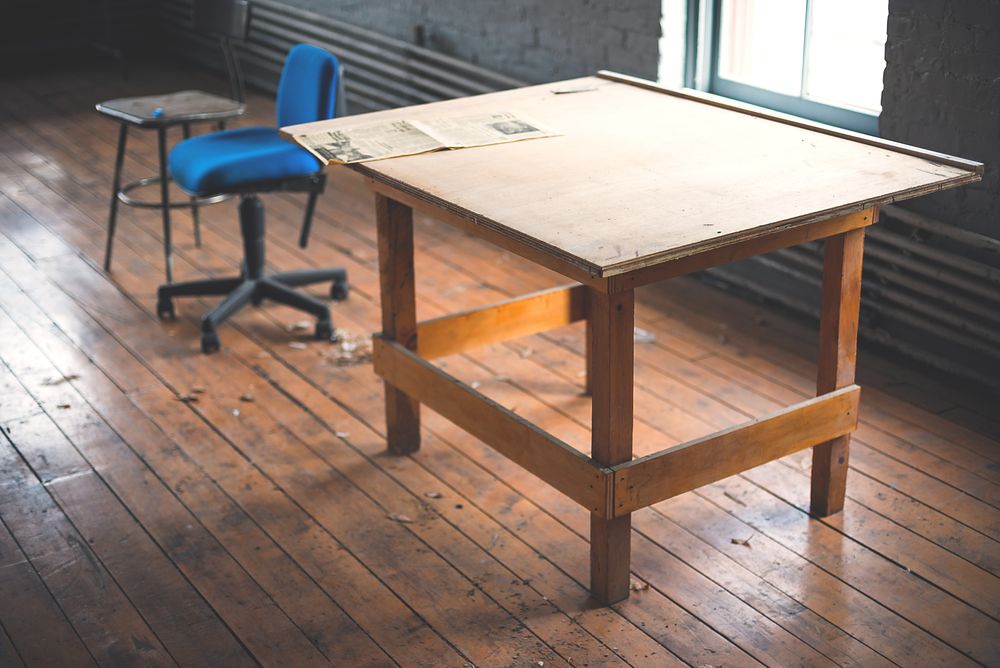
Differences Between Bamboo Flooring and Other Traditional Materials
Time has proven the usefulness and versatility of bamboo; it is now viewed as a long-term and sustainable innovation. Here are some examples:
- Unlike traditional materials such as oak or cedar, bamboo is a material that can be harvested without negatively impacting the environment.
- Its fast growth rate and ease of re-growing make it one of the best choices in the industry.
- Bamboo’s undeniable beauty coupled with its long-lasting durability is a rare and attractive combination.
- Harvesting and transporting bamboo is much better for the environment than it is for wood materials. The farming methods are greener, and because factories are usually close to the plantations, there is less fuel burned during transportation.
- Bamboo flooring can last a lifetime, from 30 to 50 years.
5 Myths About Bamboo Flooring
People often confuse facts with myths. Let’s take a look at some myths surrounding bamboo that has spread through time but have proven to be false or misleading:
1. Bamboo Flooring is Soft
When bamboo floors first hit the market, they were said to be soft and susceptible to scratching. The truth is that bamboo floors can be three times harder than traditional hardwood floors.
2. Bamboo Flooring Dents Easily
The ONLY time this is true is when cheap and poorly finished types of bamboo floors are used. A superior quality bamboo, like Ambient’s Strand Carbonized Bamboo, is tough to dent. Micro surface scratches are rare; however, they can happen if a sharp enough object is used and enough force is applied. However, that’s no different than every other surface on the planet (besides diamonds?).
3. Bamboo Contains Formaldehyde, Known to Cause Serious Health Problems
Formaldehyde is a naturally-occurring substance that is even found in the human body. Formaldehyde emissions usually happen in the case of low-cost laminate floors and rarely from bamboo flooring. The amount of formaldehyde found in good quality bamboo flooring is too negligible to even register on most formaldehyde-detecting tools.
4. Bamboo Flooring is Unstable and Doesn’t Do Well in Dry or Humid Climates
Because it is a natural product, bamboo flooring will expand as it absorbs humidity. In the same way, it will also shrink as the air grows drier. This is no different from any other hardwood floor. Because of the natural shrinking and expansion, the material should be acclimated properly before installation to avoid gaps and distortion.
5. Bamboo Flooring is not Eco-Friendly
Bamboo is the fastest growing plant on Earth. It can be re-harvested every five years. Hardwoods, however, can take 40-70 years to mature. The fast-growing bamboo plant is self-renewing. After it is cut down, it even regrows in place using the same root structure in the ground. Using bamboo for your flooring material definitely reduces your carbon footprint!
Unique Features of Bamboo Flooring
Debating between bamboo and other materials for your new floor? Consider these useful facts:
- Bamboo floors are way harder than traditional hardwoods – don’t believe us? Check out the Janka scale, which measures how strong a specific type of wood (or grass) is. Even more surprising is the fact that bamboo has a compressive strength higher than concrete or cement.
- Bamboo flooring almost always comes in wide planks and long lengths, seen as premium in the design industry.
- These floors come in a wide array of colors and surface styles. You can easily match it with the furniture or interior décor in your home.
- You or your installer can refinish or clearcoat the flooring on-site, but staining cannot be done on-site.
- Many companies turn to bamboo for high traffic showrooms and shopping areas for commercial use of bamboo flooring. This is because of its long-lasting durability and ease of maintenance, unlike any other alternatives on the market.
How Flooring Has Changed During the Years
To see the evolution of flooring throughout time, take a look at this:
- Earthen floor: Since the beginning of time, it was predominant in most European houses until the mid-14th century.
- Stone floors: Djoser’s Step Pyramid in Egypt is the oldest remaining structure made entirely out of stone.
- Concrete: Circa 5600 BC, the ancient Romans used a type of concrete very similar to modern cement to build their famous structures, including the Colosseum and the Pantheon.
- Carpet: It was invented in 5000 BC and was initially made of thick woven fabric used to decorate the walls or tables. In the 17th century, carpets became extremely popular in Europe, and in the US, Willian Sprague started the first carpet mill in 1791 in Pennsylvania.
- Ceramic tiles: Made of clay, they were first created in 4000 BC. The Romans introduced them to all the countries they conquered in Europe. Although tiles’ art had disappeared for centuries, it reappeared in Europe in the 19th century (The Vatican).
- Hardwood flooring: It first appeared in 1600 and was fashionable during the Baroque Era. Later, during the Victorian Era, hardwood flooring began being mass-produced in factories.
- Linoleum: Linoleum made its debut in 1855 and gained popularity due to its affordability.
- Multi-layered synthetic flooring: Laminated flooring, invented in Sweden in 1977, simulates wood with a lower quality than most flooring options.
Bamboo has been used for thousands of years as a ground covering in Asian homes. It has only been a modern and ecological flooring option since the early 1990s. Its use is quickly accelerating and starting to surpass other flooring alternatives on the market.
What is the Durability and Life of Bamboo Flooring Compared to Traditional Wood Flooring?
Aesthetically, bamboo flooring and traditional wood flooring are very similar. But if you take a closer look and do a little more research, you’ll find there are plenty of differences. Below are four of the primary differences, but look at Bamboo Flooring VS. Hardwood Flooring for an informative side-by-side comparison.
Material
Despite being grouped as solid wood materials, bamboo is not actually wood but a woody grass. With a different cellular structure and a much faster growth rate, tests have revealed that bamboo can actually be much stronger than wood.
Hardness
The Janka hardness test is a method to measure how hard a flooring material is by measuring the force necessary to press a large steel ball into a material. To illustrate bamboo’s hardness: strand bamboo flooring can score anywhere from 3,000 to 5,000+, red oak only measures 1220, and cherry wood measures 950. That’s a significant difference considering bamboo is merely a type of grass!
Appearance
Hardwood and bamboo both come in many different colors and surface treatments. Additionally, each plank of hardwood and bamboo is unique, giving them their beautiful natural variation.
Price
The hardwood flooring price is fairly high, while bamboo flooring is only around $4-$6 per square foot. It would help if you remembered, though, buying the cheapest priced bamboo flooring doesn’t mean you’ll get the highest quality.
We always recommend researching the brand you’re considering before making a purchase, as bamboo is not a graded material, and there are quite a few low-quality brands in the market.
Bamboo Flooring & the Environment
Society is becoming increasingly concerned about the environment – which is a good thing. Similarly, the materials used in construction are also carefully chosen, so they don’t negatively affect the environment. The higher the demand for hardwood materials, the worse it is for the environment. To satisfy demand, the decimation of vast areas of forests is occurring.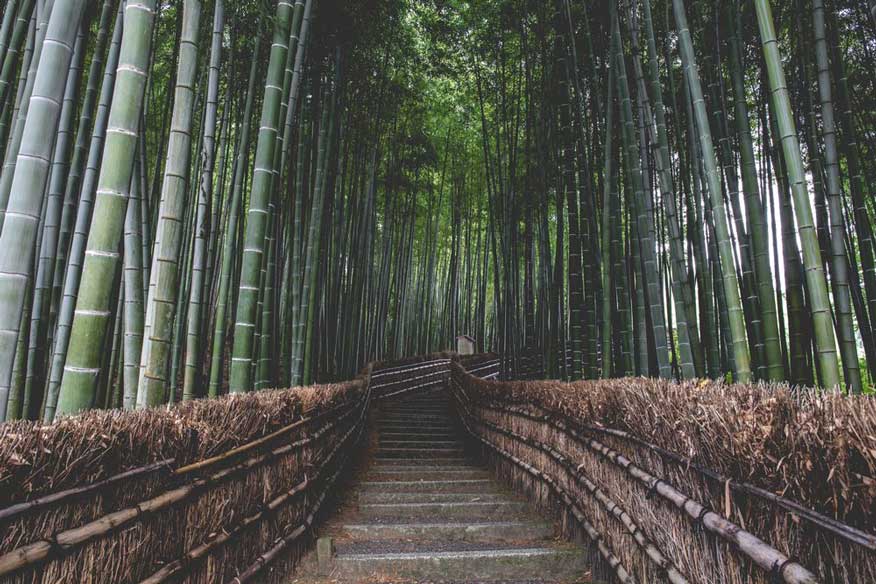
Also, the roots don’t have to be cut when the plant is harvested. This means bamboo grows continuously. This makes it the best alternative to wood flooring material that doesn’t harm the environment.
Bamboo Flooring Resistance To Changes In Weather and Humidity
How does bamboo react to changes in temperature and humidity? Remember that both hardwood and bamboo flooring can be affected by moisture. Maintaining your flooring is key to keeping the flooring in its best shape. 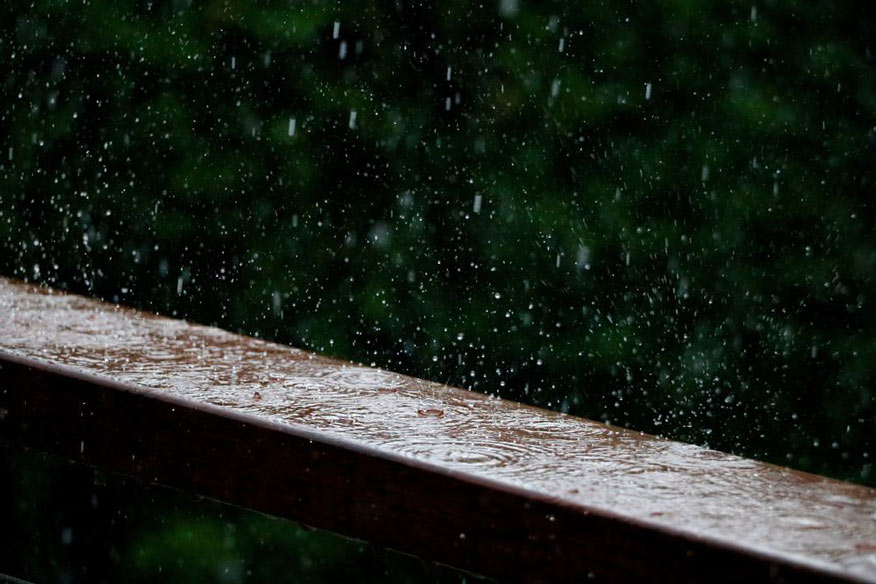
acclimate the flooring before installing it in your home, keep the indoor humidity between 35-55%, and be sure to wipe up any spills within 24 hours.
Final Thoughts
Choosing bamboo as a flooring material in your home can be a great investment. It’s not just wonderful, but it also has several advantages compared to other flooring materials.
Pros
Summing up all of the benefits of bamboo flooring, we can say that it is a great option simply because:
- Bamboo is a natural material.
- It is an eco-friendly material.
- Bamboo flooring is straightforward to maintain.
- It’s ultra-durable and can’t be damaged by pet claws.
- This flooring is great for kitchens.
- It is much more affordable than its hardwood counterparts.
- It offers an elegant and modern look to any space or area.
Cons
Just like any other material out there, there are a few downsides also:
- Bamboo should undergo acclimation before being installed to prevent gaps and distortion.
- Like hardwoods, standing water should be wiped up as soon as possible. Most good quality bamboo flooring brands have a 24-hour window to clean up spills.
Bamboo has been utilized for centuries in so many different forms. It’s no wonder that it is often the ancient solution to all the modern problems. So give bamboo flooring a try and let it do what it knows best: Being the SOLUTION!

About the Author
Meet Bridgett, your friendly neighborhood green building guru! With more years of experience than she’d like to admit, Bridgett is your go-to expert for all things eco-friendly construction. She’s on a mission to make your home the envy of every tree hugger in town (and maybe even the squirrels 🐿️). Let’s build a greener, funnier, and all-around better world together – one enlightened eco-conscious choice at a time!


